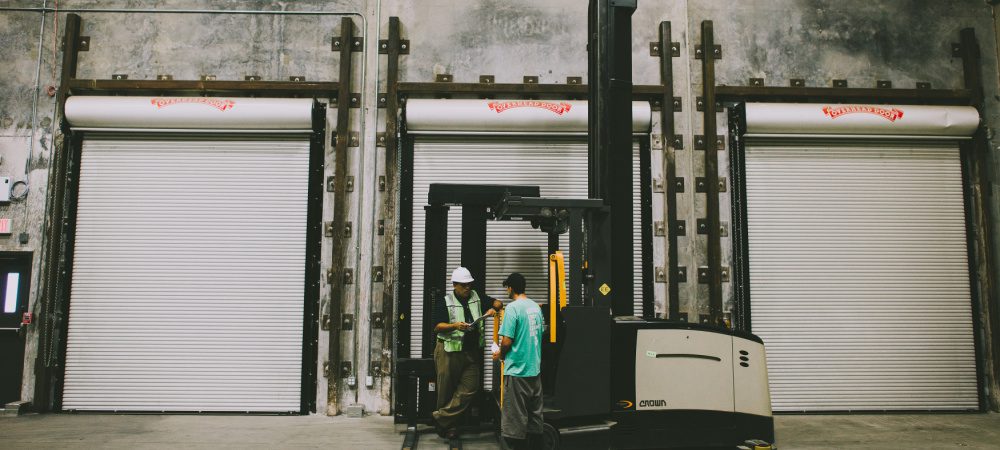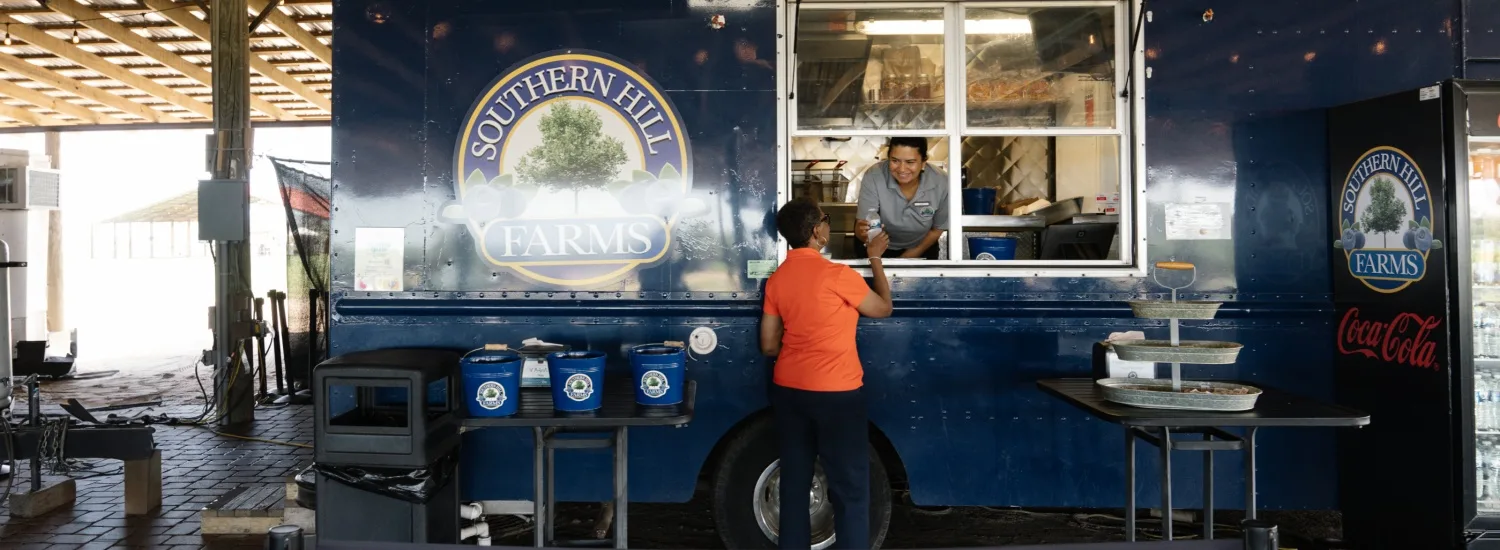Common Injuries and Prevention Tips
In 2023, there were over 2.6 million nonfatal workplace injuries and illnesses reported in the private sector, according to the Bureau of Labor Statistics. So what’s causing the most employee injuries, and how can employers get workplace safety back on track?
To find out, let’s take a closer look at the most common injuries, what they mean for employees and employers, and how you can minimize risks in your workplace.
The 10 Most Common Workplace Injuries:
At FFVA Mutual, we specialize in workers’ compensation insurance. With our extensive experience in the industry, our claims records serve as a valuable data source, from which we’ve compiled a list of the top 10 most common workplace injuries:
1. Cuts, Punctures or Scrapes
According to our workers’ compensation claim records, a cut, puncture or scrape is the most common workplace injury. This kind of accident can occur across industries and locations, from the construction site to the office, where sharp objects, tools, machinery and even the edges of furniture can cause severe injury to the point of a workers’ comp claim.
But why do cuts, punctures and scrapes happen so often? There are a number of factors, from fast-paced work environments to lack of training or proper safety protocols. To mitigate this kind of workplace accident, employers should implement rigorous safety measures, provide protective equipment when necessary and offer comprehensive training to keep workers conscious of the risks and their surroundings.
2. Repetitive Stress, Straining or Overexertion
Performing the same repetitive motions over an extended period can lead to overexertion and stress injuries. Over time, the strain this puts on the injured worker can impact their musculoskeletal system, potentially leading to disorders like acute muscle pain, chronic back pain, carpal tunnel or arthritis. This is the second most common type of occupational injury, especially for groups like construction workers who frequently need to lift heavy objects.
Employers can help prevent repetitive motion injuries by providing ergonomic equipment and workstations, training on proper lifting techniques and regular breaks to avoid overexertion or excessive workloads. Employee health also plays a role in this kind of injury, so it’s crucial to promote a healthy lifestyle and encourage workers to take advantage of preventative screenings and other health care benefits.
3. Tripping, Slipping or Falling
Tripping, slipping and falling were the third most common cause of workplace injury, and they’re a significant liability for companies. In 2020, 805 workers died from falls. 211,640 suffered severe injuries requiring days away from work in the private industry. This kind of accident can lead to a range of injuries, from minor bruises to broken bones to a traumatic brain injury or even death.
Tripping slipping and falling injuries often occur due to wet, uneven or covered surfaces, loose cables, poor lighting and other factors that impact movement and vision. Proper housekeeping is an essential first step toward minimizing this type of accident. Be sure to clean spills immediately and maintain well-lit, clear pathways. In addition, employers can conduct regular safety inspections and implement safety equipment like non-slip mats.
4. Struck by Equipment or Falling Objects
Whether it’s a falling object, a structural failure or a piece of equipment, getting struck by an object is a significant risk factor in many workplaces and another common type of work injury. In some cases, particularly in the construction industry, employees might be struck against an object or suffer from crush injuries due to collapsing structures or potentially negligent equipment operation. Similarly, falling objects pose a serious threat in both construction and warehouse environments.
All of these incidents can result in concussions, fractures or even fatalities, so it’s of the utmost importance that employers mitigate risks. Enforcing the use of hardhats and other safety gear is critical, but other measures include educating employees about safety procedures, establishing clear safety zones and ensuring proper material storage and handling.
5. Vehicle Crashes and Collisions
Rounding out the top five most common workplace injuries are vehicle crashes and collisions. Whether it’s a forklift, a company car or a semi-trailer, these incidents can have serious repercussions, resulting in long-term disabilities and worker fatalities. As usual, there are a variety of factors contributing to these accidents, from distracted driving and fatigue to poor vehicle maintenance or weather conditions.
Before allowing employees to use company vehicles, it’s crucial to perform a background check on their driving history and provide comprehensive training. Employers should also discourage multitasking while driving and conduct regular vehicle maintenance checks to ensure safe operations.
6. Foreign Materials in the Eyes
While it may come as a surprise, getting foreign material in the eyes is the sixth most common work injury, according to our claims records. Small particles, such as dust, wood, metal or chemicals, can accidentally enter the eye during normal work tasks, causing discomfort and pain in mild instances, and vision damage or permanent blindness in severe cases.
Personal protective equipment (PPE) is a must-have for any work environment where this could be an issue, as eye injuries often occur due to inadequate protection or lack of safety protocols. Employers should make sure workers have access to suitable eye protection, eyewash stations and first aid kits to address accidents immediately.
7. Violence From People or Animals
Unfortunately, many employees face the risk of violence in the workplace, from first responders to health care workers and even teachers. Physical assaults, threats and aggressive behavior are not uncommon in these lines of work. In some professions, animals also pose a significant risk to the worker.
No matter the setting, employees must follow robust safety protocols and procedures to minimize potential harm. Preventative measures like de-escalation training are crucial, but employers should also provide support, care and resources to help workers deal with the psychological effects.
8. Getting Caught in Heavy Machinery
Working with heavy machinery is inherently dangerous. We covered getting struck by a piece of equipment earlier, but another common injury is known as entanglement. This is when an employee gets part of their body — often hair, an extremity or even a limb — caught in a piece of machinery, and it poses a grave risk to workers, especially in industrial settings.
To prevent instances of entanglement, employers should always implement comprehensive machine safety training sessions and protocols. Maintenance is also crucial, as are proper machine guards, as well as lockout/tagout (LOTO) procedures. At a ground level, it’s also critical to instill a culture of safety consciousness and adherence to protocols to mitigate potential risks.
9. Exposure to Harmful Conditions
Exposure to harmful conditions is a broad and vague type of work-related injury. This catch-all category includes things like exposure to:
- Electricity.
- Noise.
- Temperature.
- Radiation.
- Pressure.
- Chemicals.
- Harmful substances.
- Emotional trauma.
Prolonged exposure to any of these conditions can cause a litany of problems, such as hearing impairment, respiratory problems and other serious health issues.
In addition to PPE, employers should provide training on handling or being in hazardous substances or environments. Regular air quality assessments are also essential for workplaces such as laboratories, manufacturing facilities and anywhere else harmful substances are used or stored.
10. Electrocution, Fire and Explosives
Finally, the 10th most common cause of work injuries are electrocution, fire and explosions. Obviously, burns can cause severe damage to body tissue and the respiratory system, but that’s not the only type of injury that can occur. Explosions can lead to flying debris and air displacement, while chemical fires and other incidents can result in toxic substance inhalation and even radiation burns.
While electrocution, fire and explosions might not be risks at every work site, it’s still critical to identify potential hazards and minimize exposure. Employers should also ensure all workers wear proper PPE and follow OSHA’s hazard communication standards.
Prepare for the Unexpected by Partnering with FFVA Mutual
If and when a work injury occurs, it’s always best to be prepared. Do you know the workers’ compensation claim process? Find out how it works in our blog on the topic.
Looking for more ways to reduce common workplace injuries? This post reviews the top workplace safety apps available to help employees stay safe while on the job.
FFVA Mutual has the experts and resources you need to make safety a top priority in your workplace. Explore our safety toolkit or talk to one of our Solutionists today.






























